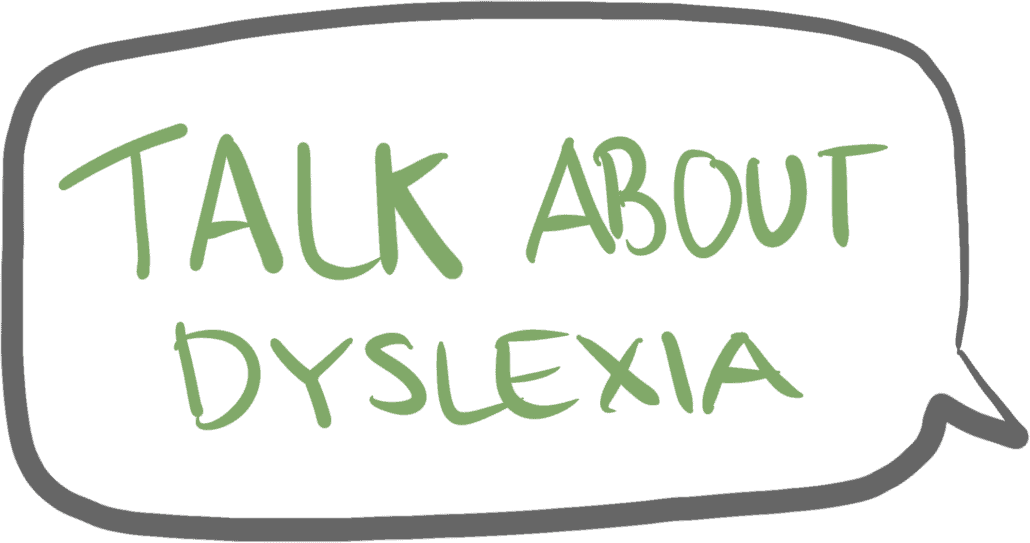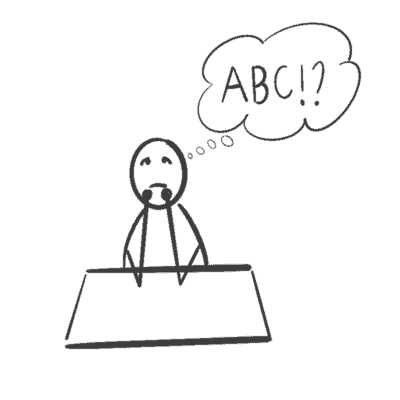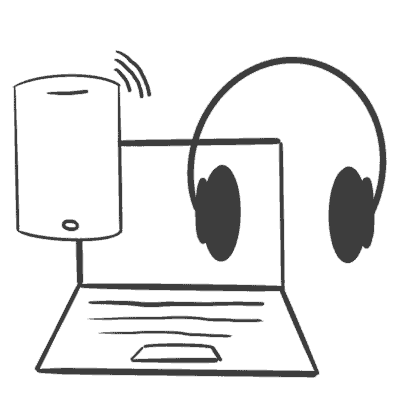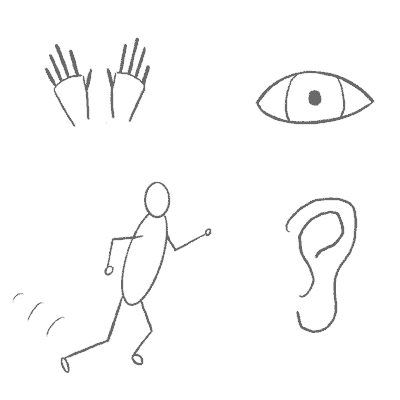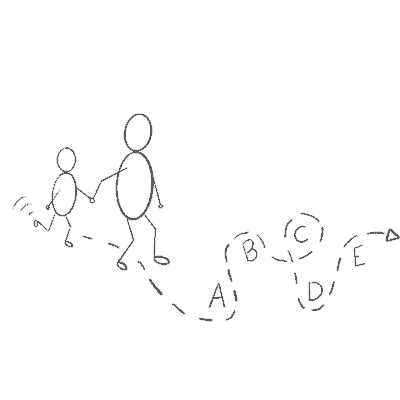What do emotions have to do with learning?
EVERYTHING!
You may remember situations in school when your heart beat faster and faster whenever you could see that it would soon be your turn to read, go up to the blackboard, do a presentation to the whole class, or something similar.
Right there is when your fear of not knowing the subject would take over. And perhaps you felt like running away from the situation.
In those situations, you weren’t capable of learning anything new either.
It wasn’t your fault. It was your brain that asked you to run.
But why?
And why is it that so often your dyslexic child feels this way?
Can it be helped?
Yes!
Let’s take a walk in the brain with all the emotions.
Here, I will show you why feelings are the primary motor for learning.
My child is dyslexic
“What is dyslexia, and what does it mean for my child?” Have you also been searching for answers to that?
The dyslexic brain
Have you also been wondering if there is something wrong with your dyslexic child’s brain? That is, why the head cannot comprehend those pesky letters.
Accepting the dyslexia
Is your child also finding it difficult to talk about their thoughts and emotions when the letters are teasing them?
FEELINGS ARE THE PRIMARY MOTOR FOR LEARNING
Our brains are programmed to react to our feelings.
Positive feelings give us, among other things, a thirst for knowledge, focus, and happiness.
Negative emotions, on the other hand, can make us nervous, anxious, and unwilling to take action.
So, when we are in a learning situation filled with positive emotions, we are ready to learn. Not only that, but when knowledge is tied to positive feelings, it is easier for the brain to recall.
That means we can use the knowledge again and again.
And when we recall this knowledge, the positive emotions are activated again. These feelings make us want to learn even more.
Voila! It is like taking a ride on a carousel that just becomes better and better.
Our brain is like a carousel that controls how well we learn. The feelings are the carousel’s motor. The more fun the carousel is to ride, the more we learn.
And you may have guessed what happens when the negative feelings have taken over…
The carousel stops.
The music ends.
Lights go off.
Of course, other things influence how well the carousel is running. For instance, whether the technical level, motivation for learning, and your child’s learning style are in sync.
But for now, we keep our focus on the emotions.
GET OFF THE CAROUSEL FOR A MOMENT
We should not stay in the negative emotions for too long, but it is good to know what happens with them. Then we can act on them.
The negative feelings also tell us something important—that we learn less when they are present.
Fortunately, it is not all negative emotions that make your child’s learning stop. If your child, for instance, is careful or withdrawn, it makes the learning process slower. But if your child is anxious, the learning process stops completely.
This is because there is a small part of the brain called the amygdala, which sends signals to the body on whether it should fight or take flight. Either is rarely the best thing to do.
But it is entirely natural. We have been like this since ancient times, so it is nothing special for your dyslexic child.
When that happens, the carousel stops abruptly, and we jump off and run.
We cannot control it. There is a blockage. We cannot learn anything.
I have experienced that many times as a person with dyslexia—both when I was sitting in school and saw it was soon my turn to read out loud, and also at home, with the demand for homework which didn’t fit my learning level at all.
Maybe your child has experienced something similar?
STRESS IS GOOD…
Yes, you read that right.
If we see stress in the body, such as the anxiety that stops your child’s learning completely, then, obviously, stress is not good.
But some types of stress are positive.
A bit of stress can be beneficial for your child’s learning.
It happens when your child is being pushed past the limit of what they can do right now.
At the same time, your child has support to get to a place where they learn something new. Professionals call it scaffolding. Yes, just like a scaffold.
It is right there where your child can go higher on the learning curve’s unknown territory with the help from a scaffold of support and guidance.
Our brain likes this type of mild stress because it has been designed to be challenged. It wants to learn. Your child wants to learn.
Here, it is essential to find the right level of mild stress for your dyslexic child. Your child will most likely not learn new things at the same level as their peers when it comes to letters and words.
Let me explain.
If there is a task in school to write about a specific topic (for instance, “What did you do during your summer holiday?” or “What can people do to combat climate change?”), then your child is at the same level as their peers and can write about the subject. The point where your dyslexic child is challenged is if the demands for reading and spelling are at the same level as their peers.
Therefore, it doesn’t make sense to push your child to do the same level when it comes to reading and spelling as their classmates if it is too difficult for your child. Then your child risks not getting the task done at all.
On the other hand, your child can also be pressured too little.
If there are too few demands on your child, they will probably become bored, and that does not create better reading or spelling abilities. In other words, the level of learning should be right where your child moves one step up from what they could do before.
Many believe that a dyslexic person has more difficulties learning and fewer options for further education. But that is not true…
Understand your dyslexic child
It can be challenging to be a parent and help with the homework without getting frustrated.
Use the apps and tools
Have you also thought about what apps and programs that are best? Then your child could get their homework done without issues…
Learning styles as a dyslexic person
Many believe that a dyslexic person has more difficulties learning and fewer options for further education. But that is not true…
So, do you want to go back to the fun ride on the carousel?
You can help create that for your child.
1 – Talk about the emotions – both positive and negative
The negative emotions cannot be stored away when they appear. And they will show up sometimes. We cannot control that, and it requires a lot of energy to try.
But if your child can understand and accept why some emotions occur when the letters show up, then they will be able to handle it constructively.
For instance, most children have learned that they should find an adult to ask for help when they feel sad.
In the same way, your child can, with support from you and other adults, move on from situations where their body freezes when they are supposed to read out loud in class. For instance, that could mean being brave enough to say: “I am dyslexic, so I need to practice before I have to read out loud for others.”
Remember, also, the positive emotions.
They help to strengthen your child’s self-confidence and self-worth.
Those are two crucial things in your child’s life. Both in school, at home, and during free time.
In school, a high degree of self-confidence and self-worth can influence your child’s belief in their abilities.
2 – Create happiness and set demands
Simply put, we learn best in an atmosphere of happiness and relaxation and the right level of demands for our abilities.
If you contribute by having a great outlook whenever you have to do homework, then the carousel is already picking up speed.
Your child is influenced by your mirror neurons. If you are positive and smile a lot, then it will affect your child.
That is really smart.
You may also get this effect during a walk on the street. If you meet someone who smiles, you will also automatically smile back, even if you don’t know the other person.
Research shows that laughter and humor are great tools for learning.
When we laugh, chemical processes in the brain create happiness and send more oxygen to the blood, which provides more energy to the brain. And it increases our ability to pick up knowledge, remember, and solve problems.
So, if you can get the laughter and good atmosphere going, then things will be more fun.
At the same time, the technical level should fit your child.
I know you probably haven’t been educated in assessing this, so it is better to speak with your child’s teachers or other professionals.
But you can always tell whether your child finds it difficult or easy to do the homework assignments. If their frame of mind feels wrong to you, the level should be adjusted.
Another extra tip for creating a good atmosphere is to consider how physical space affects your child’s emotions.
Do you have, for instance, a cozy place to do homework?
Physical surroundings are closely connected to your child’s learning style. If you want to learn more about this, I have written an article on learning styles for you here.
3 – Make mistakes into positives
Those of us who have dyslexia are good at making mistakes when it comes to letters and words.
We can either choose to be sad and close the book, or we can get help to fix the mistake and learn from it the next time we are facing the same word.
One thing is for sure—if your child closes the book, then the learning stops.
Your child must know that it is okay to make mistakes.
The carousel ride is over for now.
I hope the ride was insightful.
Motivation to read
Would you also like to motivate your child to read more? And is it difficult to find the right “carrot”?
Difficulty with learning how to read
Does my child have reading difficulties or dyslexia? You can see that your child is struggling with the letters, but how does your child progress?
Jesper Sehested
Dyslexic, author, speaker and mentor
Sources:
Lauridsen, Ole (2016), ‘Hjernen og læring’.
